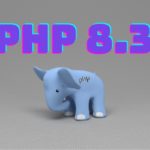No one can deny that one of the most exciting developments in recent years is artificial intelligence. AI used to seem like something only big companies with huge budgets could afford. But now, its capabilities have become more accessible for small businesses.
Imagine being able to automate routine tasks, predict customer needs, and make data-driven decisions. And no, you don’t need to hire a massive team of specialists for that. These are the kinds of opportunities AI opens up for small businesses. In this article, we’ll explore how AI can help your business grow, what tools are available, and how to use them effectively. Let’s get started!
What is AI and ML?
Artificial intelligence is a field of computer science that focuses on creating systems capable of performing tasks that traditionally required human intelligence. This includes things like speech recognition, natural language understanding, decision-making, and even playing chess. AI enables machines to “think” and “learn” based on data and algorithms without needing explicit programming for each task.
What is ML? Machine learning is a subset of AI that focuses on giving computers the ability to learn from data. Instead of programming every step, ML algorithms allow systems to automatically improve as they process more data. This is done by creating models that find patterns in the data and use these patterns to make predictions or decisions.
56% of businesses are already using AI to make operations easier. These advanced systems can simplify and completely reshape how you run your business. How? Let’s check out all the details!
AI’s impact on small businesses extends beyond customer insights and support. A key area where AI is transforming industries is through open-source software (OSS). The OSS transformation is enabling companies to innovate rapidly, reduce costs, and customize solutions to meet specific needs. By leveraging OSS, businesses can stay competitive and agile in a constantly evolving market.
AI for customer insights
Gathering customer information is the foundation of a successful business. You need to understand what your customers need and like to tailor products and services to their preferences. With artificial intelligence, small businesses can easily gather and analyze this data.
The first step to using AI for customer insights is data collection. Data can come from various sources:
- Social Media. Platforms like Facebook, Twitter, Instagram, and others provide a wealth of information about customer behavior and preferences.
- Web Analytics. Tools like Google Analytics help track customer interactions with your website.
- CRM Systems. Customer relationship management systems (like Salesforce) help collect and organize customer information.
- Surveys and Questionnaires. Direct interaction through surveys and questionnaires can also provide valuable data, which you can then “feed” to ML algorithms.
Once you’ve collected the data, it needs to be analyzed. Here’s how AI can help:
- Customer Segmentation. AI can divide your customers into different segments based on their behavior, preferences, and demographics. This helps tailor marketing campaigns for specific customer groups. For example, you might find that a particular group prefers buying certain products during specific times of the year. Use tools like IBM Watson to create accurate customer segments.
- Personalizing Marketing Campaigns. Use data to create more targeted and personalized marketing campaigns. Automation tools like HubSpot or Marketo can assist with this.
- Sentiment Analysis. These tools can analyze customer reviews on social media and other platforms to understand what they think about your brand and products. This isn’t just about reputation management. Sentiment analysis can reveal if customers are unhappy with a particular aspect of your product, giving you a chance to improve it. Use sentiment analysis tools like MonkeyLearn or Lexalytics, two popular choices.
If you want to make more informed decisions, you should definitely use these technologies for customer insights. Personalization is a trend, and this strategy leads to more personalized marketing campaigns.
AI for strengthening customer support

Customer support is a key element of a successful business. Today, customers expect accurate answers to their questions quickly. No one is willing to wait for hours for a response; by that time, they’re likely to have moved on to your competitors. AI provides small businesses with powerful tools to improve and automate customer support.
Automating responses
One of the simplest and coolest ways to use AI for customer support is automating responses to frequently asked questions (FAQ). AI chatbots can handle common customer inquiries in real time, so customers can get instant answers.
For example, if customers frequently ask about the status of their orders, a bot can automatically provide this information by integrating with your order management system.
Try tools like Drift, Intercom, and Chatfuel. They allow you to create chatbots that can answer common questions and redirect more complex queries to live agents.
Personalizing customer support
AI can use customer data to personalize their support experience. Imagine a customer has previously contacted you with a specific issue. An AI-powered support system can suggest solutions based on the customer’s past interactions. Platforms like Salesforce Einstein and Zendesk can use AI for these purposes.
Predicting customer issues
AI can predict potential customer problems before they arise and suggest proactive solutions. For example, if AI detects that customers who frequently ask about a specific issue are likely to churn, it can recommend proactive measures to prevent this.
Platforms like IBM Watson and Microsoft Azure AI can analyze large amounts of data and identify trends that might indicate future problems.
Natural language processing
Natural Language Processing technologies allow AI to understand and process customer queries in natural language. AI can “read” and analyze customer messages in chats or emails and automatically categorize them.
Google Cloud Natural Language and Amazon Comprehend (among other similar tools) allow you to implement NLP technologies into your customer support systems.
Sentiment analysis
AI can analyze customer sentiment and provide insights to improve service. This might sound absurd at first—how can an AI model guess a person’s mood? It’s simple! AI can analyze the tone and content of customer messages to determine their level of satisfaction.
What’s next? If AI detects that a customer is expressing dissatisfaction and is very annoyed, the system can automatically escalate the query to a more experienced agent for immediate resolution. Platforms like MonkeyLearn and Lexalytics offer tools for real-time sentiment analysis.
Automating responses to frequent questions, personalizing support, predicting issues, using NLP technologies, and sentiment analysis—all these AI capabilities help improve customer service quality and increase customer satisfaction.
AI for maximizing marketing performance
AI opens up a ton of new possibilities for marketing. It helps companies make their campaigns more effective and achieve better results. Small businesses can also leverage AI to enhance their marketing efforts. With these technologies, you can gain deeper insights into your audience and create personalized campaigns. Let’s talk about this from a more practical standpoint.
- Personalized Marketing. Personalization is key to successful marketing. AI can analyze past customer purchases and create personalized recommendations for each segment, significantly increasing the chances of repeat purchases. Use platforms like HubSpot and Mailchimp, which use AI for automatic audience segmentation and targeted campaign creation.
- Content Optimization. AI can help determine which content works best for your audience. It’s simple: this tech can analyze user engagement data with your content. This can show you that your audience responds better to video content compared to text posts, allowing you to focus on creating more videos. Check out tools like BuzzSumo and SEMrush, which use AI to provide content recommendations.
- Automating Marketing Campaigns. AI can automatically send personalized email campaigns based on customer behavior and preferences. For example, if a customer adds an item to their cart but doesn’t complete the purchase, AI can automatically send a reminder with a discount offer to encourage them to finish the purchase. Look into platforms like ActiveCampaign and Drip for this.
- Data Analysis and Predictive Analytics. AI can predict which customers are likely to respond to, say, seasonal discounts, allowing you to focus your marketing efforts on these segments. If you want to integrate this, Google Analytics and Adobe Analytics are two popular choices.
- Optimizing Ad Campaigns. This solution can automatically optimize ad campaigns in real time. For instance, AI can detect that certain keywords are generating more conversions and can automatically increase the budget for those keywords while lowering bids on less effective ones. Platforms like Google Ads and Facebook Ads use AI for these purposes.
And this is just the tip of the iceberg. There are more applications of this tech in marketing than you can imagine. But even the aspects described above can completely transform your business metrics.
AI for simplifying recruiting

Recruiting and finding talent are important but challenging tasks for small businesses. Often, there’s not enough staff to run large-scale hiring campaigns. With AI, these processes become more successful and, of course, less labor-intensive. Technology helps streamline candidate searches and make more informed hiring decisions. In this section, we’ll look at how small businesses can use this tech to simplify their recruiting and talent acquisition processes.
- Automating Routine Tasks. AI can automate many routine tasks. It can quickly analyze and evaluate resumes based on set criteria and highlight the most suitable candidates. It can also automatically filter out resumes that don’t meet the minimum requirements (such as lacking certain experience or skills). Platforms like Lever and Greenhouse can help with that.
- Improving Candidate Search. AI can analyze candidate profiles on social media platforms like LinkedIn and suggest candidates with skills that may not be listed on their resumes but are evident in their professional activities and social media posts. For example, LinkedIn Recruiter uses this technology to find and recommend candidates based on their profiles.
- Informed Hiring Decisions. AI can analyze candidate data and predict their success in the company. It can forecast that candidates with certain soft skills (such as communication and adaptability) are more likely to succeed in your team. While this may sound futuristic, it can already be integrated today. Platforms like Pymetrics and HireVue use AI for predictive analytics of this kind.
- Reducing Bias. AI can help reduce bias in the hiring process. It can suggest replacing phrases that might deter candidates of certain genders or ethnic groups with more neutral and appealing ones. Textio uses AI to optimize job posting language.
So, if you want to be unbiased and increase the chances of your new hires staying with your team long-term and being successful, consider integrating AI solutions.
AI for forecasting demand
Forecasting demand is a critical task for any business, and we’d argue it’s especially vital for small enterprises. Resources are often limited, and accurate forecasts are needed to optimize inventory, plan production, and enhance financial planning. AI offers excellent tools for this. Let’s check out how they can help.
AI employs sophisticated algorithms and big data analysis to forecast future trends:
- Machine Learning uses algorithms that learn from historical data and make predictions based on that data.
- Deep Learning involves more complex neural networks capable of analyzing large and intricate datasets for more accurate forecasts.
Here are some of the steps that can help you implement AI for forecast demand:
- Data Collection. The first step is gathering relevant data. This could include sales data, consumer data, economic indicators, and even weather data. Google Analytics for web traffic data, ERP systems for sales data, public APIs for economic and weather data.
- Data Preparation. Data preparation involves cleaning, normalizing, and formatting data for use in AI models. Python libraries like Pandas and NumPy can assist with data preparation.
- Model Training. Training AI models involves selecting an appropriate algorithm, training the model on historical data, and tuning parameters for accuracy optimization. Scikit-learn and TensorFlow are popular libraries for machine learning and deep learning.
- Testing and Validation. After training the model, it’s crucial to test it on new data and verify the accuracy of forecasts. Data splitting into training and testing sets, cross-validation.
- Deployment and Monitoring. After successful model testing, it can be deployed into business processes for automatic demand forecasting. Continuous monitoring and updating of the model with new data are essential. Using APIs to integrate the model into business processes, monitoring with tools like Grafana.
Ultimately, this can be applied across various industries. For instance, in retail, this technology enables forecasting inventory needs and preventing both excess and shortages of goods.
Do you have your manufacturing? This tech can optimize production planning, minimizing downtime and maximizing efficiency.
And in the service sector, you can forecast staffing needs, optimize schedules, and improve customer service quality—all thanks to these marvelous technologies!
Conclusion
Implementing AI across various aspects of enterprise operations helps improve customer understanding, optimize support, enhance marketing efficiency, simplify hiring processes, and accurately forecast demand. As a result, small businesses can compete on equal footing with larger players.
However, successful tech application requires not only financial investments but also employee training, business process adaptation, and, of course, continuous monitoring of results.
Now is the time for small businesses to start exploring the opportunities offered by AI and integrating them into their strategy. Utilizing AI in business is not just a trend but the primary opportunity today to increase competitiveness.










Leave a Reply